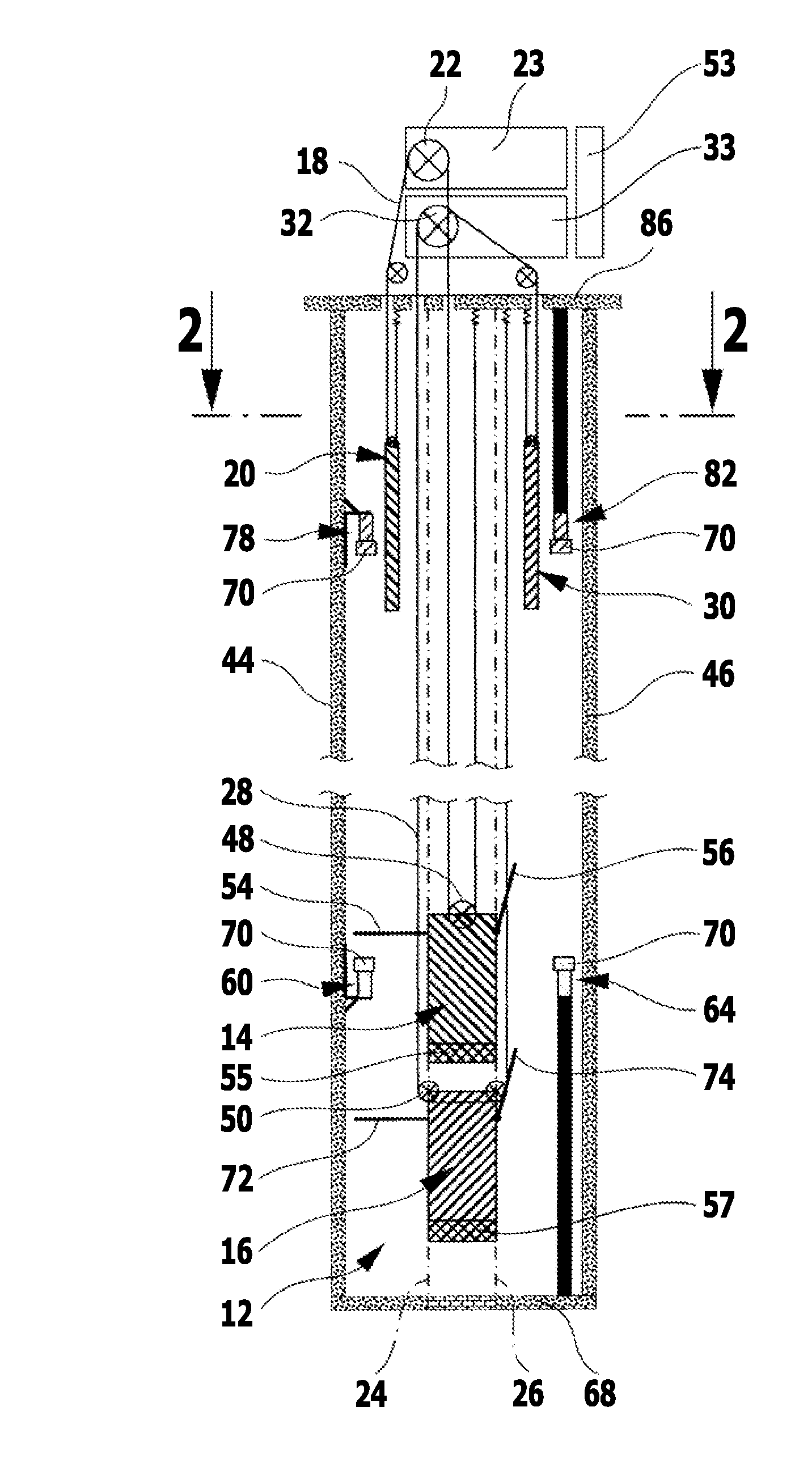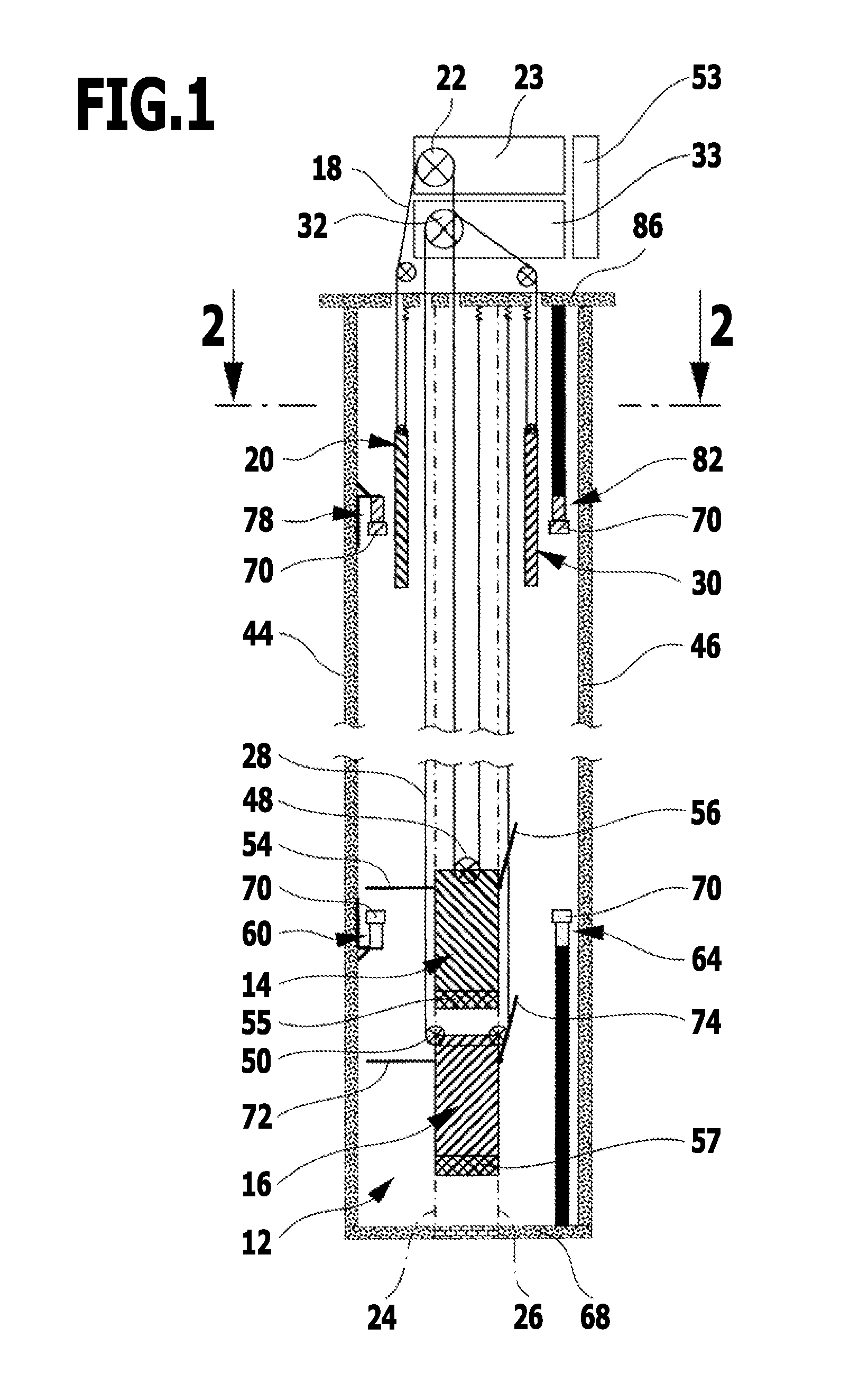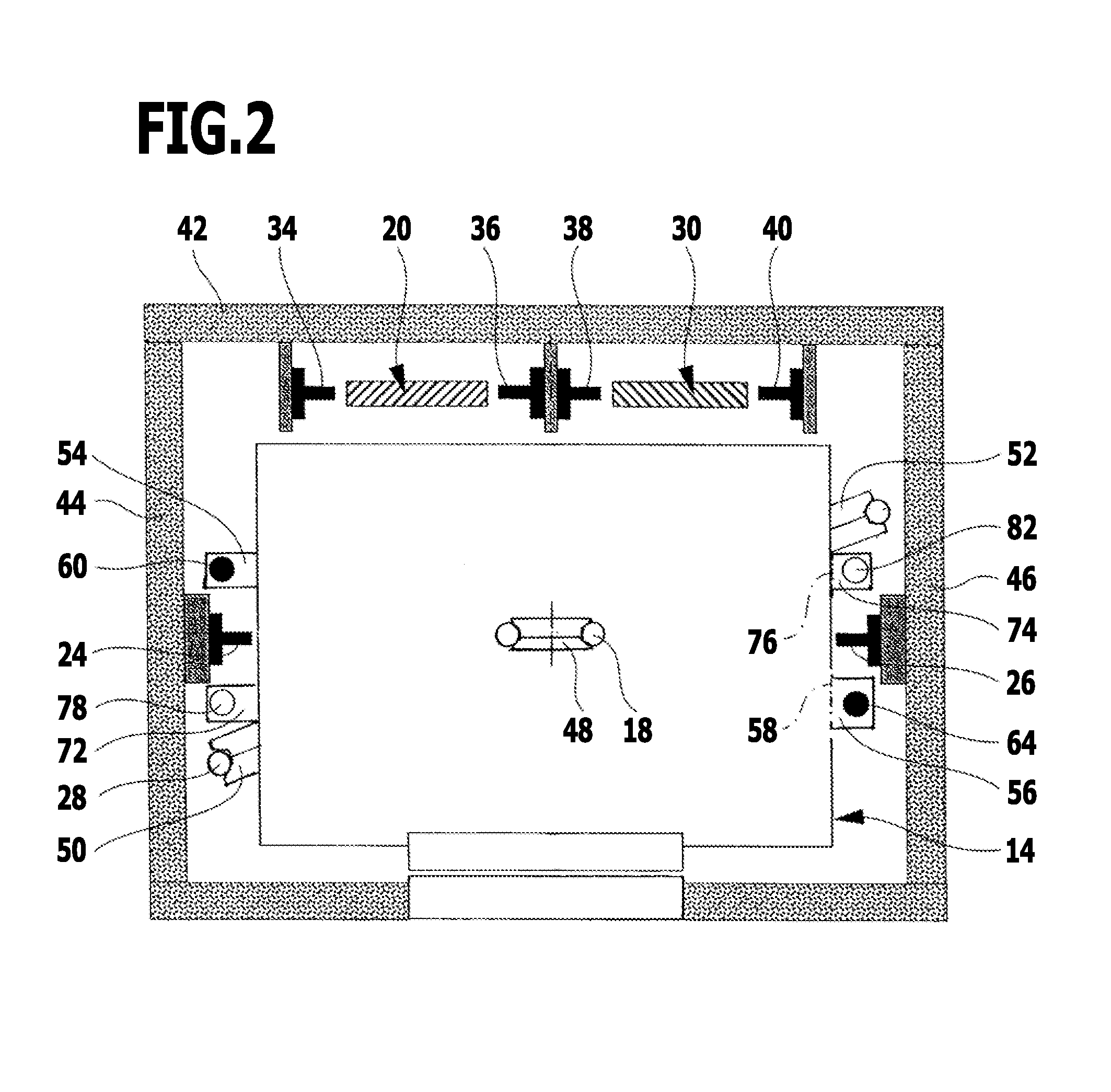Elevator installation
a technology for installing elevators and elevators, which is applied in the direction of elevators, transportation and packaging, building lifts, etc., can solve the problems of limiting the transportation capacity of elevator installation and the safety distance required to do so, and achieve the effect of reducing the impact speed, reducing the impact distance, and increasing the impact speed
- Summary
- Abstract
- Description
- Claims
- Application Information
AI Technical Summary
Benefits of technology
Problems solved by technology
Method used
Image
Examples
second embodiment
[0069]an elevator installation in accordance with the invention, generally denoted by reference numeral 100, is shown in FIG. 3. This is largely identical in configuration to the elevator installation 10 explained above with reference to FIGS. 1 and 2. The same reference numerals as in FIGS. 1 and 2 are, therefore, used for identical components in FIG. 3, and regarding these components reference is made to the above explanations in order to avoid repetitions.
[0070]The elevator installation 100 differs from the elevator installation 10 in that the buffer elements 70 are not arranged on the retaining elements 60, 64, 78 and 82, but instead the buffer elements 70, in the elevator installation 100 shown in FIG. 3, are held on the stop elements 54, 56 and 72, 74. Again, when the stop elements 54, 56 strike the retaining elements 60 and 64, respectively, and when the stop elements 72 and 74 strike the retaining elements 78 and 82, the impact energy can be absorbed by the buffer elements 7...
third embodiment
[0072]an elevator installation 110 in accordance with the invention, which is largely identical in construction to the elevator installations 10 and 100 explained above, is shown in FIGS. 4 and 5. Identical reference numerals will, therefore, be used for identical components in the elevator installation 110 shown in FIGS. 4 and 5 and also in the elevator installation 130 shown in FIG. 6 and explained below, as in FIGS. 1, 2 and 3, and regarding these components reference is made to the above explanations in order to avoid repetitions.
[0073]The elevator installations 110 and 130 are shown in FIGS. 4 and 6 in sectional views, which run perpendicularly to the shaft rear wall 42 and thereby make the arrangement of the counterweights 20, 30 alongside each other and the region between the counterweights 20, 30 and the shaft rear wall 42 clearer. In the elevator installations 110 and 130, differently from the elevator installations 10 and 100 explained above, stop elements are not arranged...
PUM
 Login to View More
Login to View More Abstract
Description
Claims
Application Information
 Login to View More
Login to View More - R&D
- Intellectual Property
- Life Sciences
- Materials
- Tech Scout
- Unparalleled Data Quality
- Higher Quality Content
- 60% Fewer Hallucinations
Browse by: Latest US Patents, China's latest patents, Technical Efficacy Thesaurus, Application Domain, Technology Topic, Popular Technical Reports.
© 2025 PatSnap. All rights reserved.Legal|Privacy policy|Modern Slavery Act Transparency Statement|Sitemap|About US| Contact US: help@patsnap.com



